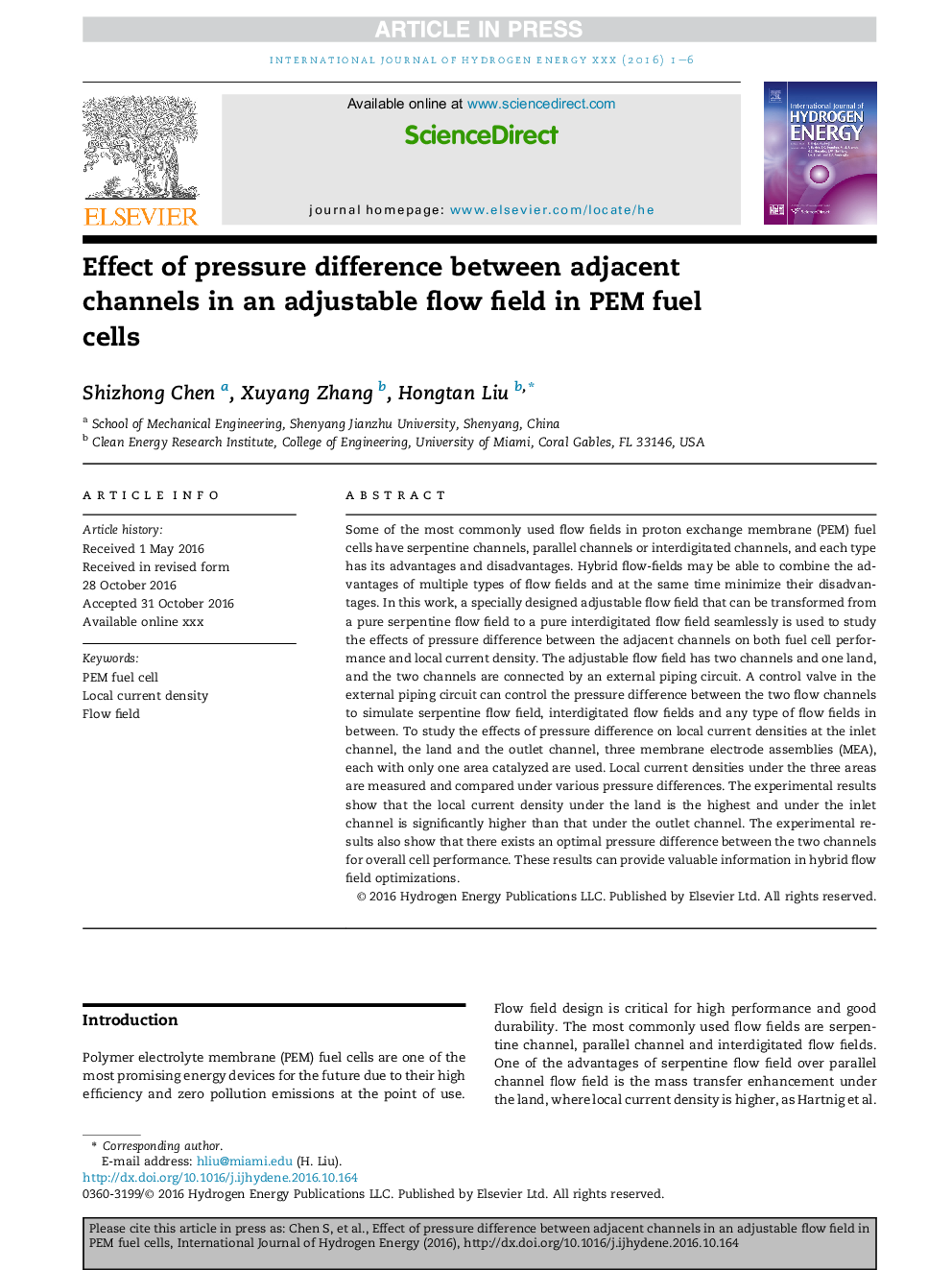| Article ID | Journal | Published Year | Pages | File Type |
|---|---|---|---|---|
| 5146383 | International Journal of Hydrogen Energy | 2017 | 6 Pages |
Abstract
Some of the most commonly used flow fields in proton exchange membrane (PEM) fuel cells have serpentine channels, parallel channels or interdigitated channels, and each type has its advantages and disadvantages. Hybrid flow-fields may be able to combine the advantages of multiple types of flow fields and at the same time minimize their disadvantages. In this work, a specially designed adjustable flow field that can be transformed from a pure serpentine flow field to a pure interdigitated flow field seamlessly is used to study the effects of pressure difference between the adjacent channels on both fuel cell performance and local current density. The adjustable flow field has two channels and one land, and the two channels are connected by an external piping circuit. A control valve in the external piping circuit can control the pressure difference between the two flow channels to simulate serpentine flow field, interdigitated flow fields and any type of flow fields in between. To study the effects of pressure difference on local current densities at the inlet channel, the land and the outlet channel, three membrane electrode assemblies (MEA), each with only one area catalyzed are used. Local current densities under the three areas are measured and compared under various pressure differences. The experimental results show that the local current density under the land is the highest and under the inlet channel is significantly higher than that under the outlet channel. The experimental results also show that there exists an optimal pressure difference between the two channels for overall cell performance. These results can provide valuable information in hybrid flow field optimizations.
Related Topics
Physical Sciences and Engineering
Chemistry
Electrochemistry
Authors
Shizhong Chen, Xuyang Zhang, Hongtan Liu,
